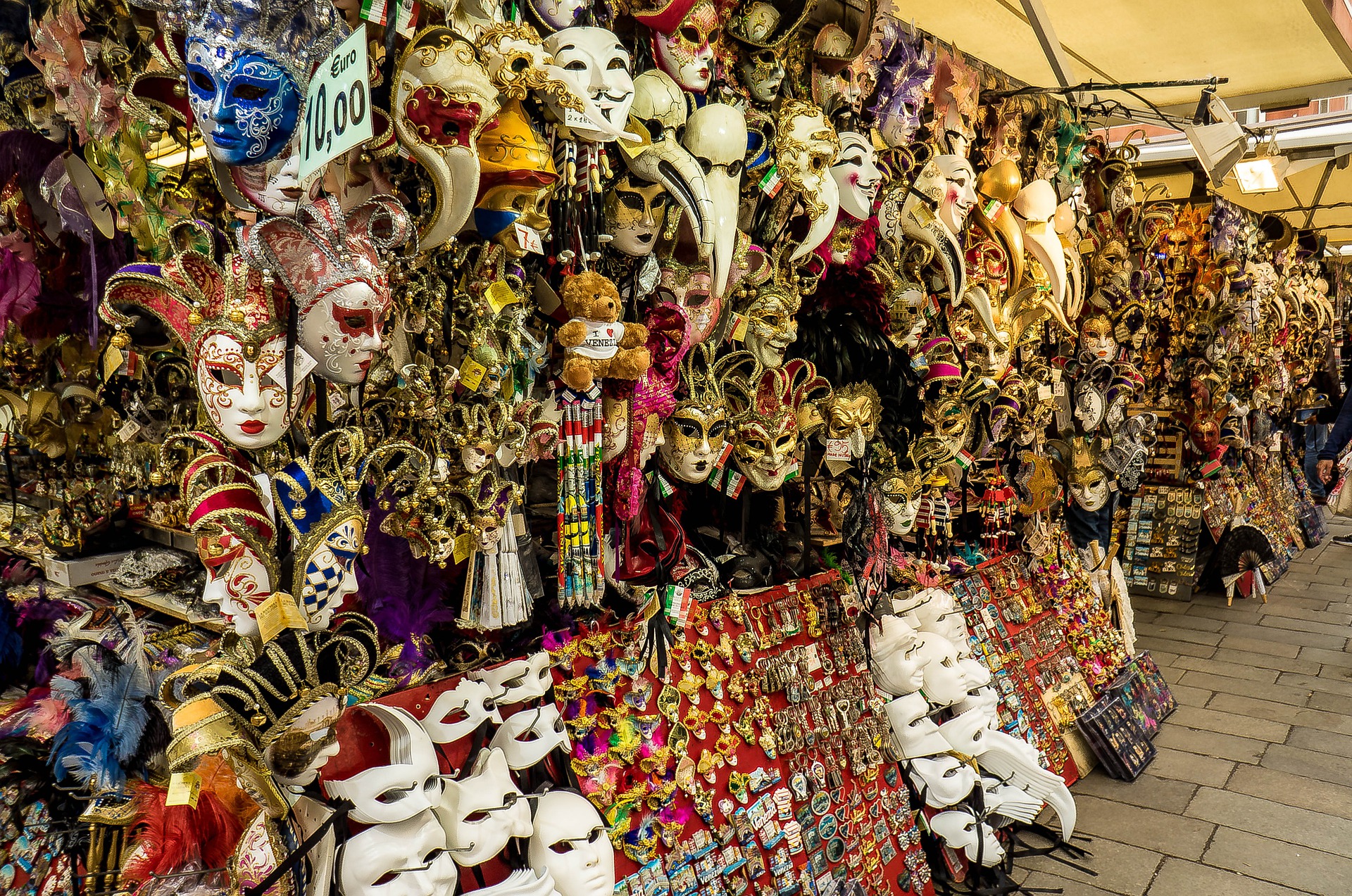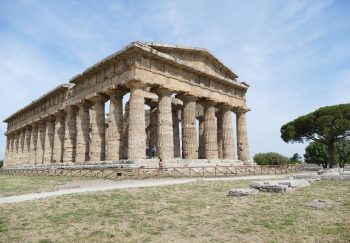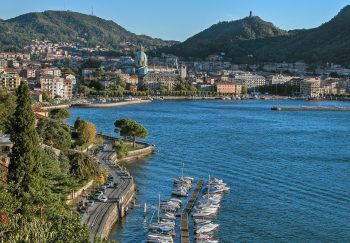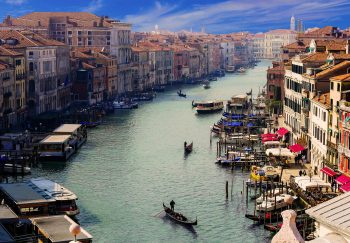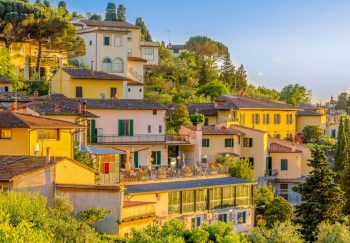Italy is home to world-class souvenir shopping. We don’t just mean trinkets. Think of the world’s most famous markets, delicatessens stocked with local specialty foods, or flagship stores owned by a world-famous Italian designers. Italy’s artisanal products will be the star of any event, no matter where you are. Italy has a long tradition of producing some of the best hand-made products in the world. This makes the “Made in Italy” tag an indicator of its superior quality.
Although it can be difficult to find authentic souvenirs from Italy, knowing where to shop is the best way. Are you unsure where to begin? Don’t worry! These are the best souvenirs from Italy, and where you can find them.
Leather in Florence
Tuscany is home to the famous Chianina cows, as well as a vibrant central business district in Florence. This makes it an ideal place for leather production. The Santa Croce neighborhood in Florence is right on the banks of the Arno River. This area has been home to water-intensive trades like hiding tanning since the 13th Century. This area is home to 35% of the country’s leather production today.
Although you can find genuine Italian-quality leather in Tuscany and nearby Umbria, Florence still remains the best place to purchase that amazing handmade purse, coat, or belt.
You won’t find any small-scale leather shops here because it is so big. But you will find a wide range of options. Santa Croce is a great place to check out the top brands. If you have only one day in Florence then take a tour of San Lorenzo Market, which has dozens of booths and stores selling all kinds of leather products. You will see signs that say “Italian quality” to ensure the leather is authentic and has not been chemically treated. Leather will feel soft and imperfect. It should be natural in color, and it should feel soft. This souvenir from Italy is not cheap. Although you can and should bargain, high-quality leather is not cheap.
Murano Glassware
A stunning souvenir to take home from Italy is Murano glass made by skilled artisans.
Murano is an island just off the coast of Venice that has been a leader for European glassware for centuries. Venice was a key trading port for goods from the Mediterranean and the Far East. The city’s artisans created glassmaking technology that combined influences from Roman, Greek, and Asian cultures. The government relocated them to Murano, a nearby island, as the industry grew. The Venetian Republic eventually became the dominant European trading power and the glassmakers were able to benefit. Their income was very useful to the state, and artisans enjoyed a prominent position throughout the Renaissance.
The glassmakers continue to amaze visitors today with their amazing skill. They can create anything, from chandeliers to intricately crafted earrings and bottle stoppers using techniques that were first developed in the 1200s.
There are many imitations of Murano glass, even some made on Murano’s island! Be cautious when selecting Murano glass. To ensure you get the genuine deal, look for well-respected brands and the Artistic Glass Murano(r), a trademark of origin.
For those who just want to admire more beautiful glass designs, and learn more about their history, you can visit the Museo del Vetro (Glass Museum), in Palazzo Giustinian, Murano Island.
Ceramics in Vietri sul Mare
Vietri Sul Mare is brimming with shops that sell the area’s famous majolica ceramic pottery. Photo by Karlis Dambrans
Vietri Sul Mare, like all Amalfi Coast villages, has great food and stunning views. But its true claim to fame is its rich ceramics heritage. Vietri Sul Mare is home to majolica, brightly colored clayware pottery from Italy.
Although majolica ceramics can be found all over the Amalfi Coast area, artisans in Vietri Sul Mare took the unique, colorful style of centuries-old tradition and adapted them for modern tastes. They now make ceramic vases and plates as well as decorations for your home.
Ceramics are decorated with hand-painted patterns that reflect the Mediterranean lifestyle of the Amalfi Coast. The fire-glazed pieces are decorated with brightly colored sunflowers and grapes as well as landscapes. These are the perfect souvenirs from Italy, whether you’re looking for a complete set or a single piece. Although the prices are generally reasonable, larger items or those that have been shipped will be more expensive.
Vietri sul Mare: Stop by the Fabbrica Di Ceramiche Solimene for more information about ceramics traditions and contemporary developments. Or, visit the Museo Provinciale della Ceramica located in Villa Guariglia.
All woodwork in Trentino-Alto Adige
Trentino-Alto Adige hosts verdant pine forests as well as the jagged pink peaks of the Dolomites. It is a place where both nature and civilization coexist harmoniously, as exemplified in their artisanal traditions. Trentino’s wood from the forests is the backbone of life. Most buildings are made from local trees such as spruce and scotch pine. These woods are often used in handicrafts made by local artisans.
Woodcarving was a tradition in the area that began during long cold winters when whole families would gather around the stove or stove to keep warm. We’re glad that they were able to pass the time by doing something with their hands. Today, Trentino-Alto Adige’s woodcarvings stand out. These are great gifts for your home, including benches, chairs, cutlery, cutting boards, and wine holders.
Marionettes from Palermo
Although puppets may seem quaint, marionettes and puppets in Sicily are so well-made that you just can’t resist taking one home. Based on stories from Commedia dell’Arte, the Medieval Italian puppet theatre was one of the pioneers of European puppetry. It is no surprise that the Italians have cultivated a culture of telling stories. This is even more evident in modern puppet shows. Although the stories are timeless, the dialogue is created on the spot. This means that a skilled performer must be able to handle his marionette well and be an expert in improvisation.
Puppet shows are still performed today at Opera dei Pupi, Palermo in Sicily. The marionettes, which date back to the 15th Century, depict characters from Southern Italy’s past. While fighting historical foes such as Saracens and Norman invaders, heroes of important battles fall for dark-haired Sicilian women.
The marionettes are made from wood and have strings and metal wires to hold them up. UNESCO has designated the art and craft of Sicilian puppetry as a cultural heritage. This medieval theater is always in competition with other forms of entertainment. Palermo is home to many studios and artisans selling classic marionettes. While quality can vary, all are exceptional examples of an extraordinary form of cultural expression.
Our Insider’s Guide to Palermo will help you learn more about this vibrant, fascinating city.
Naples: Nativity scenes and figurines
Naples is the best place to celebrate Christmastime. Since St. Since the 13th century when Francis created the presepe (nativity scene), Italians have made it their own. Neapolitans are now the top sellers and makers of small scenes and the accompanying figurines. They think they are the best at it, and so are many Italians.
You can still view this artisan craft even if you’re not able to visit during Christmastime. The famous nativity scene maker on Via San Gregorio Armeno is located in the historic center of Naples. There are hundreds of shops selling hand-made nativity scene designs. They have floor-to-ceiling options and can be customized with animals, landscape features and the holy family. These shops are open all year, showcasing the beautiful hand-made figures of Naples. Every Italian family will have a presepe, which is more than just a tree or lights. It should be prominently displayed every December 8th. Presete masters are the best place to purchase a nativity scene for your family. They’re located in one of Italy’s most historic cities.
You can also visit the Museo Nazionale Di San Martino to view a complete collection of Neapolitan Nativity Scenes, including the largest ever. The Presepe Cuciniello is a massive diorama that includes 162 carved human figures and 80 animals. It also contains more than 500 objects.
Silk from Como
Como has been producing silk for over 4 centuries. To get to Como, silkworms had to travel a long way. They had to travel from China to the Eastern Mediterranean to Sicily, then up the boot to northern Italy to reach Como. It wasn’t until Italy industrialized in the 18th century, that Como became Italy’s largest silk producer. It still holds this title today. Como supplies 85% of all Italian silk and 70% of European silk. It supplies silk to major fashion houses in Milan, Paris, New York, and other areas.
The silkworms require a steady supply of water to grow, but the beautiful mountains surrounding Como are likely to help them. Como is the center of Italy’s culture and beauty. What is more luxurious than a trip to Lake Como in a silk scarf, tie or shirt made on-site?
Silk is a luxurious item but you can still find it in Bellagio and Como for a very reasonable price, if you are a smart shopper. To get an idea of the prices, visit each shop and pay close attention to boutiques and markets. These places often have high-fashion items as well as samples or new designs.
Regional food from…well, any region
Every region and micro-region of Italy is known for its food. There are many local specialties, from the Perugia cured meats to the Amalfi lemons to the Puglia tomatoes to the truffles of Tuscany. Stop by a delicatessen to pick up a can, bottle, or parcel of whatever you like. Many local specialties are not good for traveling – we wouldn’t recommend that you try to pack an arancino in your suitcase. However, cured meats and wines, olive oils, and digestives such as the popular limoncello, can be great gifts that will bring Italy home.
